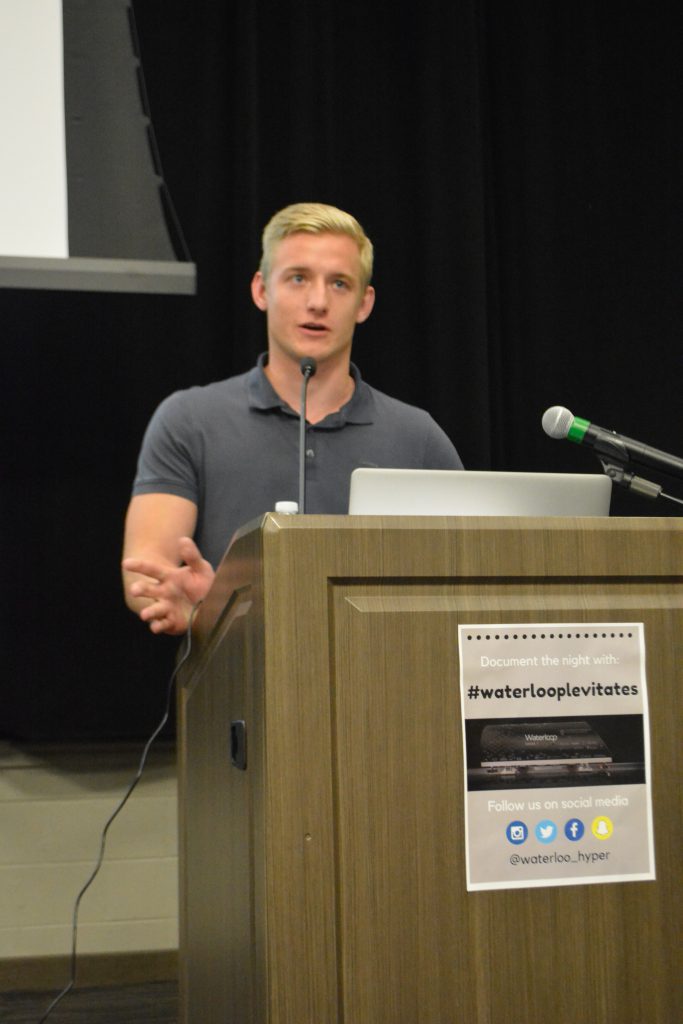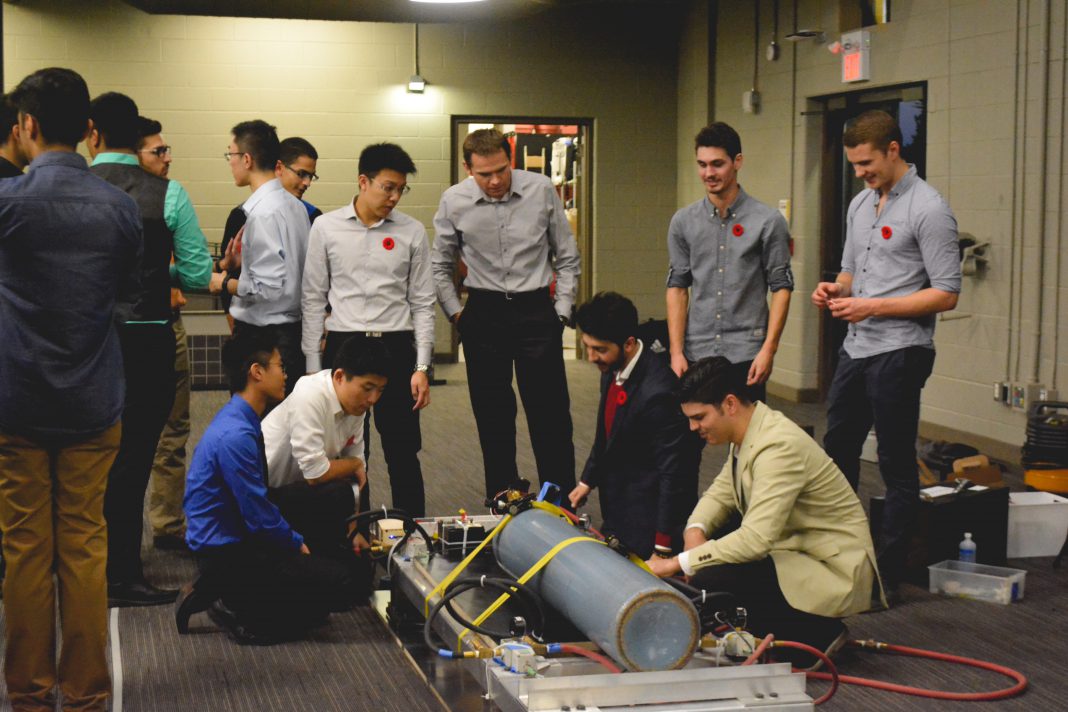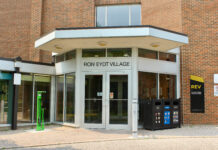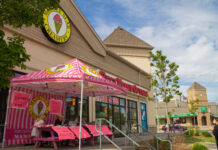With a whirr and the push of a finger, Waterloop’s test pod Goose I levitated along its track during the team’s live demonstration in Federation Hall Nov. 1.
The demonstration is another step in the 150-strong team’s bid to win the Hyperloop pod competition. First envisioned by SpaceX’s Elon Musk, the Hyperloop is a high-speed transportation system that could move passengers between San Francisco and Los Angeles in 30 minutes. The competition challenge, open to students and independent engineering teams, is to build the people-holding pod for the system.
Waterloop, the UW-based team in the competition, is the only Canadian team still in the running. “It’s all about getting this Canadian pod to competition to represent the country,” said test-track lead Stefan Sing. “Y’know, show them what Canada’s made of and what Waterloo’s made of. We want to do everyone proud.”
During the demonstration, a team member could pull the pod along a wooden track with a single finger. The ease of movement through levitation is key to creating a fast-moving pod without friction to slow it down or cost extra fuel. After deactivation, the test pod was too heavy for even a group of students to push.

Waterloop has had an entire community behind them to reach that goal. Their Kickstarter campaign, launched on Oct. 19 and met its $20,000 goal within 48 hours. Kickstarter fundraising will stay open until Nov. 18.
“This $20K with our existing sponsorship we have, we can build our pod,” Sing said. “[the extra money] gives us the freedom to look at other options… There’s always something, so that money will not be wasted frivolously on pointless objects.”
Jake Malliaros, EC brake system lead, has been with Waterloop since it began 14 months ago. “There was a student who made a post on Reddit, [and] we kind of got together and talked,” he said.
“We selected our options based on our experience and what would work for the project … and just picking up more people along the way.”
Along with team members and community supporters like Tim Jackson and dean of UW engineering Pearl Sullivan, local startups connected to Waterloop were there to show their products.
Inksmith’s president Jeremy Hedges was showing one of the parts his company 3-D printed for Goose I production. One piece on display achieved “75 per cent weight reduction while maintaining strength,” Hedges said.

According to Hedges, Inksmith has already “printed 12 pieces for them so far. When we’re done, we’ll have 40 or 50.”
Other startups present included SkyWatch, Babylon VR (who had a virtual Waterloop experience), Sustainable Archietecture+Building, and PitStop.
Waterloop will be shipping their Goose I pod to SpaceX’s test track in California Jan. 27, where it will compete with teams from around the world. The final winner will be decided after a second California test summer 2017.
Jackson, CEO of Shad and former executive vice-president of Toronto’s MaRS Discovery District, applauded the efforts of both Waterloop and Elon Musk for making Hyperloop come to life. “What we’re talking about here with Waterloop, we’re not talking about building an app, we’re not talking about doing something simple, we’re talking about doing something transformational,” he said in his keynote speech.
“I think the idea of taking something that people can only envision in theory and say ‘we’re going to tackle it’ is what we do here at Waterloo and particularly what we do here at the University of Waterloo … it is no surprise to me that a team from the University of Waterloo is the only Canadian team still standing in the competition.”






























